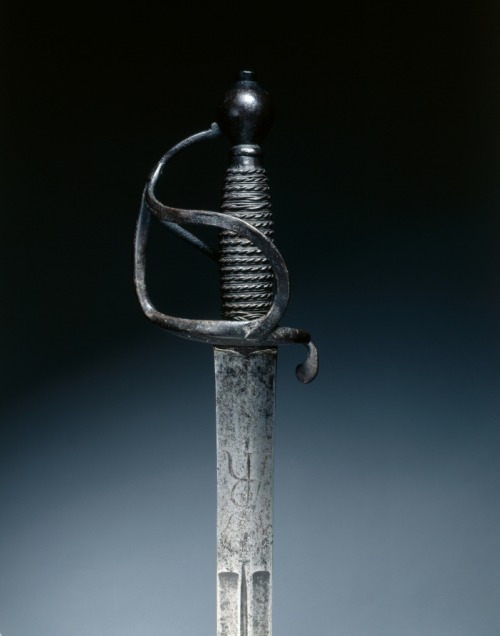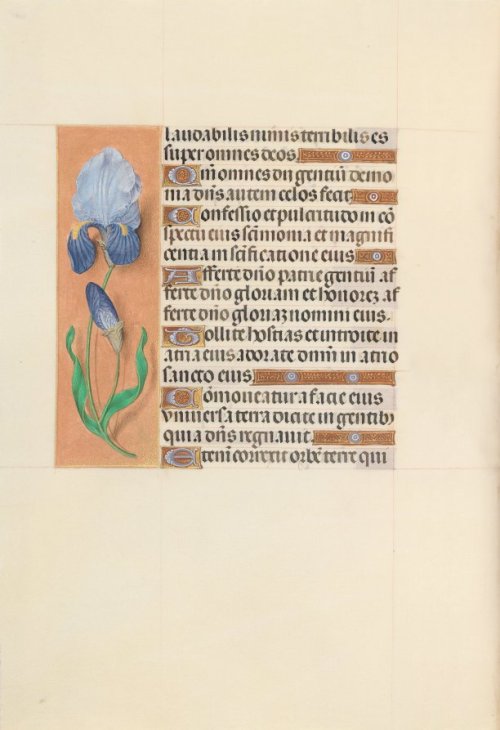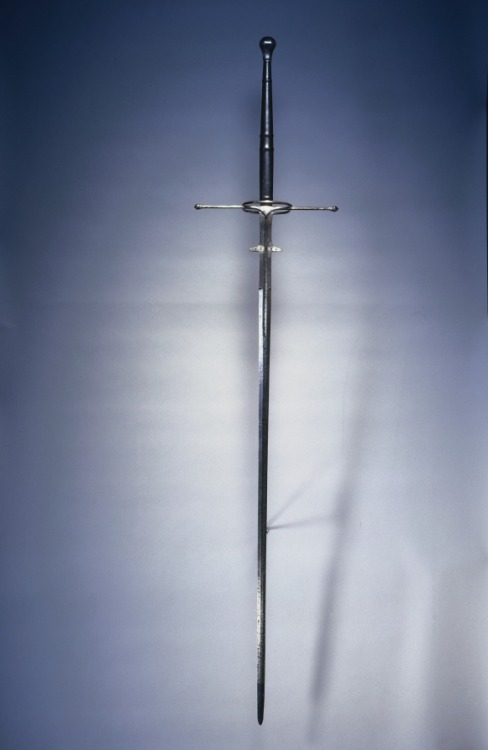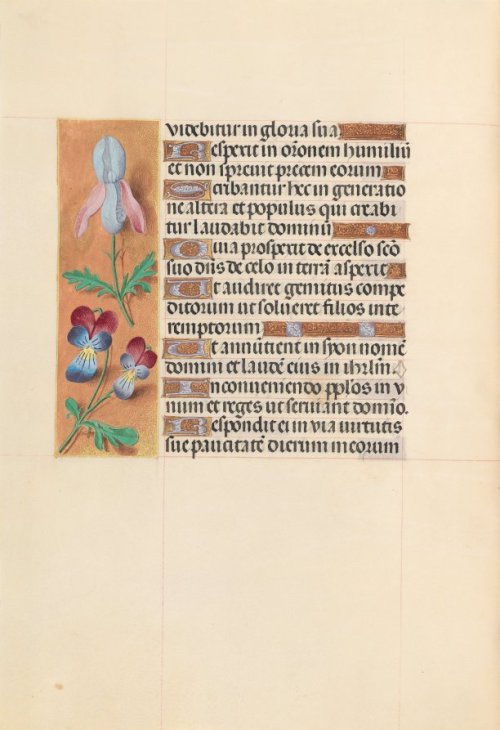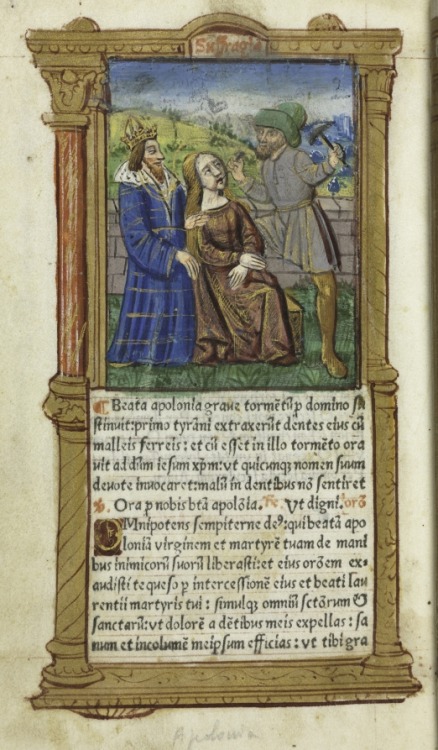#medievalart
Dish with a Lion, c. 1430-1450,Cleveland Museum of Art: Medieval Art
This dish is representative of the rustic type of maiolica produced in Italy before 1450. The design is much inspired by contemporary Spanish earthenware. The surface of the dish is painted in a cobalt blue impasto technique known as zaffera a rilevo. Lions frequently adorn wares decorated in this technique and are particularly appropriate as a Florentine motif-they probably refer to that city’s lion emblem.
Size: Diameter: 28.6 cm (11 ¼ in.)
Medium: tin-glazed earthenware (maiolica)
Post link
Executioner’s Sword, late 1600s,Cleveland Museum of Art: Medieval Art
Although the axe was favored in England, for centuries swords were used throughout Central Europe for beheadings. The blades were often etched with moralizing inscriptions and designs representing Justice (as here), the gallows, the rack, or the Crucifixion. By the early 1700s swords were no longer used in Europe for executions, but they still functioned as symbols of power. This sword was probably ceremonial.
Size: Overall: 108.9 cm (42 7/8 in.); Blade: 85.7 cm (33 ¾ in.); Quillions: 22.5 cm (8 7/8 in.); Grip: 15 cm (5 7/8 in.)
Medium: steel, wood, brass and copper wire
Post link
Dear undead bonesman, why do you incessantly bang on your desiccated groin rather than follow the example of your fellow-traveler in the egregiously jaunty hat?
#skeletonwar #dansemacabre #medievalart #mementomori #boneyboys #dembones
https://www.instagram.com/p/BqqdNIvlND5/?utm_source=ig_tumblr_share&igshid=podxehzz63px
Post link
Hours of Charles the Noble, King of Navarre (1361-1425): fol. 233r, Text, Master of the Brussels Initials and Associates, c. 1405,Cleveland Museum of Art: Medieval Art
This precious volume was obviously highly prized by its owner, the French-born King of Navarre, who had his coat of arms painted on no less than twenty folios. Rather than directly commissioning this manuscript from a specific workshop, it seems that Charles the Noble acquired his book of hours – perhaps ready-made for the luxury market – while on a trip to Paris in 1404-05. A collaborative effort, six painting styles are evidenced within the pages of this codex, those of two Italians, two Frenchmen, and two Netherlanders. The painter who was responsible for the planning and decoration of the book, and who produced seventeen of the large miniatures, was a Bolognese artist known as the Master of the Brussels Initials. His principal assistant, responsible for most of the borders, was a Florentine who signed his name “Zecho” da Firenze on folio 208 verso.
Size: Codex: 20.3 x 15.7 x 7 cm (8 x 6 3/16 x 2 ¾ in.)
Medium: ink, tempera, and gold on vellum
https://clevelandart.org/art/1964.40.233.a
Post link
Missale: Fol. 116: Saint Matthew with Angel, Bartolommeo Caporali, 1469,Cleveland Museum of Art: Medieval Art
Size: Overall: 35 x 25 cm (13 ¾ x 9 13/16 in.)
Medium: ink, tempera and burnished gold on vellum
https://clevelandart.org/art/2006.154.116.b
Post link
Ewer with a Trefoil (Three-Part) Spout, 300-600,Cleveland Museum of Art: Medieval Art
Size: Diameter: 8 cm (3 1/8 in.); Overall: 20.7 x 13.1 cm (8 1/8 x 5 3/16 in.)
Medium: silver with niello
https://clevelandart.org/art/1956.33
Post link
The Gotha Missal: Fol. 72v, Text, Master of the Boqueteaux, c. 1375,Cleveland Museum of Art: Medieval Art
This elegant Latin manuscript is known today as The Gotha Missal after its eighteenth-century owners, the German Dukes of Gotha. The volume was originally copied and illuminated in Paris around 1375 – a commission of the Valois king, Charles V “the Wise” (1364-1380), one of the great bibliophiles of the fifteenth century and brother of Dukes Philip the Bold of Burgundy and Jean de Berry. Manuscript missals were not intended for the lay user, but rather for the use of the celebrant at Mass. The present volume was therefore meant to be used by the king’s private chaplain and was probably housed in Charles’s private chapel, possibly in his principle residence, the Palace of the Louvre (demolished in the sixteenth century). The main decorative body of the missal consists of two full-page miniatures comprising the Canon of the Mass and twenty-three small miniatures. The style and high quality of the decoration points to its inclusion withing a select group of manuscripts accepted today as from the hand of Jean Bondol. Bondol was active at the court of Charles V from 1368 until 1381 where he headed the court workshop and also served as the king’s valet de chambre. The blind-tooled leather binding dates to the fifteenth century.
Size: Codex: 27.1 x 19.5 cm (10 11/16 x 7 11/16 in.)
Medium: ink, tempera, and gold on vellum; blind-tooled leather binding
https://clevelandart.org/art/1962.287.72.b
Post link
Pair of Doors (right door), early 1400s,Cleveland Museum of Art: Medieval Art
Typical of Muslim-inspired ornamentation, these doors reflect a love of geometric decoration stemming from a non-realistic artistic tradition. They consist of applied wood strips that form eight-point stars, flowers, and geometric interlace designs. Such designs are reflected in the tiles, ceramic vessels, and metalwork of Muslim-occupied Spain. The origin of the doors is not known, but they may have belonged to a palace or domestic residence. In 711, the Moors had invaded and conquered nearly the entire peninsula. During the next 750 years, independent Muslim states were established, and the entire area of Muslim control became known as Al-Andalus. Muslim philosophers and scientists developed knowledge in areas like medicine, optics, algebra, chemistry, and geometry, as seen here.
Size: Overall: 170.2 x 86.4 cm (67 x 34 in.)
Medium: gilded and painted wood (pine)
https://clevelandart.org/art/1915.565.2
Post link
Five Guineas, 1746,Cleveland Museum of Art: Medieval Art
Medium: gold
https://clevelandart.org/art/1969.208
Post link
Battle Axe, late 1500s,Cleveland Museum of Art: Medieval Art
Size: Blade: 8.3 cm (3 ¼ in.); Head: 27.3 cm (10 ¾ in.)
Medium: steel, inset with copper rosette
https://clevelandart.org/art/1916.1599
Post link
Altarpiece with The Passion of Christ, Master of the Schlägl Altarpiece, c. 1440s,Cleveland Museum of Art: Medieval Art
The visual focus of this altarpiece is the suffering and death of Christ on the cross. So-called Passion cycles in art include the events leading up to and following the Crucifixion, not only as single subjects but as scenes meant to be read in sequence. Passion cycles were promoted by the two great teaching orders, the Franciscans and the Dominicans, for whom this subject represented the main religious drama of their churches, and also by the German mystics who advocated private contemplation on the humanity and suffering of Christ. The original context for this altarpiece remains unknown, but it was probably made for a religious institution in Westphalia in the Rhine Valley. During the 1870s it was given to the Abbey of Schlägl, near Linz in Upper Austria, from which both altarpiece and artist take their names. The altarpiece is not preserved today in its original format, and some of the individual scenes are missing. Scholars continue to debate the original number of scenes and their sequencing; nine of the original panels have survived.
Size: Framed: 88.9 x 157.5 x 8.3 cm (35 x 62 x 3 ¼ in.); Unframed: 74.3 x 69.8 cm (29 ¼ x 27 ½ in.); Part 1: 84.9 x 81.4 x 8.3 cm (33 7/16 x 32 1/16 x 3 ¼ in.); Part 2: 84.6 x 152.2 x 8.3 cm (33 5/16 x 59 15/16 x 3 ¼ in.); Part 3: 84.6 x 78.7 x 8.3 cm (33 5/16 x 31 x 3 ¼ in.); Panel: 36.2 x 35 cm (14 ¼ x 13 ¾ in.)
Medium: oil and gold on wood
https://clevelandart.org/art/1951.453.b
Post link
The Gotha Missal: Fol. 75r, Text, Master of the Boqueteaux, c. 1375,Cleveland Museum of Art: Medieval Art
This elegant Latin manuscript is known today as The Gotha Missal after its eighteenth-century owners, the German Dukes of Gotha. The volume was originally copied and illuminated in Paris around 1375 – a commission of the Valois king, Charles V “the Wise” (1364-1380), one of the great bibliophiles of the fifteenth century and brother of Dukes Philip the Bold of Burgundy and Jean de Berry. Manuscript missals were not intended for the lay user, but rather for the use of the celebrant at Mass. The present volume was therefore meant to be used by the king’s private chaplain and was probably housed in Charles’s private chapel, possibly in his principle residence, the Palace of the Louvre (demolished in the sixteenth century). The main decorative body of the missal consists of two full-page miniatures comprising the Canon of the Mass and twenty-three small miniatures. The style and high quality of the decoration points to its inclusion withing a select group of manuscripts accepted today as from the hand of Jean Bondol. Bondol was active at the court of Charles V from 1368 until 1381 where he headed the court workshop and also served as the king’s valet de chambre. The blind-tooled leather binding dates to the fifteenth century.
Size: Codex: 27.1 x 19.5 cm (10 11/16 x 7 11/16 in.)
Medium: ink, tempera, and gold on vellum; blind-tooled leather binding
https://clevelandart.org/art/1962.287.75.a
Post link
Missale: Fol. 173: Music for “Alleluia” etc. at beginning of Easter, Bartolommeo Caporali, 1469,Cleveland Museum of Art: Medieval Art
Size: Overall: 35 x 25 cm (13 ¾ x 9 13/16 in.)
Medium: ink
https://clevelandart.org/art/2006.154.173.a
Post link
Two Guineas [pattern] (obverse), John Sigismund Tanner, 1773,Cleveland Museum of Art: Medieval Art
Medium: gold
https://clevelandart.org/art/1969.210.a
Post link
Hours of Queen Isabella the Catholic, Queen of Spain: Fol. 177v, St. Sebastian, Master of the First Prayerbook of Maximillian, c. 1500,Cleveland Museum of Art: Medieval Art
This manuscript was illuminated by a circle of at least five highly organized manuscript painters active in the Flemish cities of Ghent and Bruges. The principal illuminator was Alexander Bening, who painted the majority of the book’s miniatures. Manuscripts produced by this circle of artists are renowned for the decoration of their borders, which typically feature a rich variety of realistically-painted flowers, birds, and butterflies. This prayer book, called a book of hours, was intended not for a cleric, but for the private devotions of a lay person-in this case, Isabella the Catholic, Queen of Spain (1451-1504). Isabella’s coat of arms embellishes the book’s frontispiece. It is unlikely that the book was commissioned by the Queen herself; rather, she probably received it as a diplomatic gift from someone courting her patronage, perhaps Cardinal Francisco Jimenez de Cisneros. A Franciscan friar, Jimenez was dependent upon Isabella for his advancement, first to the post of Queen’s confessor in 1492, and then to Archbishop of Toledo in 1495.
Size: Codex: 22.5 x 15.2 cm (8 7/8 x 6 in.)
Medium: ink, tempera, and gold on vellum
https://clevelandart.org/art/1963.256.177.b
Post link
Cavalry Sword, c. 1700-1730,Cleveland Museum of Art: Medieval Art
Size: Overall: 105 cm (41 5/16 in.); Blade: 105 cm (41 5/16 in.); Grip: 14.5 cm (5 11/16 in.); Guard: 11 cm (4 5/16 in.)
Medium: steel (vestiges of blueing and gilding on hilt); wire grip
https://clevelandart.org/art/1919.55
Post link
Book of Hours (Use of Rouen): fol. 73r, Master of the Geneva Latini, c. 1470,Cleveland Museum of Art: Medieval Art
Size: Codex: 19.5 x 13.1 cm (7 11/16 x 5 3/16 in.)
Medium: ink, tempera, and gold on vellum
https://clevelandart.org/art/1952.227.73.a
Post link
Hours of Queen Isabella the Catholic, Queen of Spain: Fol. 107v, Master of the First Prayerbook of Maximillian, c. 1500,Cleveland Museum of Art: Medieval Art
This manuscript was illuminated by a circle of at least five highly organized manuscript painters active in the Flemish cities of Ghent and Bruges. The principal illuminator was Alexander Bening, who painted the majority of the book’s miniatures. Manuscripts produced by this circle of artists are renowned for the decoration of their borders, which typically feature a rich variety of realistically-painted flowers, birds, and butterflies. This prayer book, called a book of hours, was intended not for a cleric, but for the private devotions of a lay person-in this case, Isabella the Catholic, Queen of Spain (1451-1504). Isabella’s coat of arms embellishes the book’s frontispiece. It is unlikely that the book was commissioned by the Queen herself; rather, she probably received it as a diplomatic gift from someone courting her patronage, perhaps Cardinal Francisco Jimenez de Cisneros. A Franciscan friar, Jimenez was dependent upon Isabella for his advancement, first to the post of Queen’s confessor in 1492, and then to Archbishop of Toledo in 1495.
Size: Codex: 22.5 x 15.2 cm (8 7/8 x 6 in.)
Medium: ink, tempera, and gold on vellum
https://clevelandart.org/art/1963.256.107.b
Post link
Hours of Charles the Noble, King of Navarre (1361-1425): fol. 260v, St. John the Baptist, Master of the Brussels Initials and Associates, c. 1405,Cleveland Museum of Art: Medieval Art
This precious volume was obviously highly prized by its owner, the French-born King of Navarre, who had his coat of arms painted on no less than twenty folios. Rather than directly commissioning this manuscript from a specific workshop, it seems that Charles the Noble acquired his book of hours – perhaps ready-made for the luxury market – while on a trip to Paris in 1404-05. A collaborative effort, six painting styles are evidenced within the pages of this codex, those of two Italians, two Frenchmen, and two Netherlanders. The painter who was responsible for the planning and decoration of the book, and who produced seventeen of the large miniatures, was a Bolognese artist known as the Master of the Brussels Initials. His principal assistant, responsible for most of the borders, was a Florentine who signed his name “Zecho” da Firenze on folio 208 verso.
Size: Codex: 20.3 x 15.7 x 7 cm (8 x 6 3/16 x 2 ¾ in.)
Medium: ink, tempera, and gold on vellum
https://clevelandart.org/art/1964.40.263.a
Post link
Two-Handed Sword, 1550-1600,Cleveland Museum of Art: Medieval Art
The two-handed sword, originally a weapon of war for specialist infantry, is so named because two hands were required to wield it. By the late 1600s, these enormous swords assumed a largely ceremonial or bodyguard function.
Size: Overall: 168.3 cm (66 ¼ in.); Blade: 126.4 cm (49 ¾ in.); Quillions: 35.2 cm (13 7/8 in.); Grip: 41.3 cm (16 ¼ in.); Ricasso: 20.3 cm (8 in.)
Medium: steel, wood and leather grip; fluted pommel
https://clevelandart.org/art/1916.1509
Post link
Hours of Queen Isabella the Catholic, Queen of Spain: Fol. 207v, Master of the First Prayerbook of Maximillian, c. 1500,Cleveland Museum of Art: Medieval Art
This manuscript was illuminated by a circle of at least five highly organized manuscript painters active in the Flemish cities of Ghent and Bruges. The principal illuminator was Alexander Bening, who painted the majority of the book’s miniatures. Manuscripts produced by this circle of artists are renowned for the decoration of their borders, which typically feature a rich variety of realistically-painted flowers, birds, and butterflies. This prayer book, called a book of hours, was intended not for a cleric, but for the private devotions of a lay person-in this case, Isabella the Catholic, Queen of Spain (1451-1504). Isabella’s coat of arms embellishes the book’s frontispiece. It is unlikely that the book was commissioned by the Queen herself; rather, she probably received it as a diplomatic gift from someone courting her patronage, perhaps Cardinal Francisco Jimenez de Cisneros. A Franciscan friar, Jimenez was dependent upon Isabella for his advancement, first to the post of Queen’s confessor in 1492, and then to Archbishop of Toledo in 1495.
Size: Codex: 22.5 x 15.2 cm (8 7/8 x 6 in.)
Medium: ink, tempera, and gold on vellum
https://clevelandart.org/art/1963.256.207.b
Post link
Leaf from the Wettinger Gradual: Historiated Initial (I) with Scenes from the Life of St. Augustine, Second Master of the Wettinger Gradual, c. 1330,Cleveland Museum of Art: Medieval Art
This imposing leaf comes from the monumental Wettinger Gradual preserved in the Canton Library in Aarau, Switzerland. The focus of the decoration consists of a single massive initial I. It is constructed with four separate compartments featuring scenes from the life of Saint Augustine. The compartments read (from bottom to top): Augustine teaching before his conversion; the dream of Augustine’s mother; Augustine’s baptism; and Augustine teaching monks. The monk in the lower margin holds a scroll that reads in Latin: “Pray for us, blessed Father Augustine.” The initial would have introduced the feast of Saint Augustine (August 28) in the Sanctorale: In medio Ecclesiae aperuit os eius (“And in the midst of the church she shall open his mouth”). Given the prominence of this initial within the gradual, and the depiction of an Augustinian canon in the lower marginal extender, the manuscript was likely produced for a community of Augustinians.
Size: Sheet: 57.9 x 38.3 cm (22 13/16 x 15 1/16 in.); Framed: 61.6 x 76.8 cm (24 ¼ x 30 ¼ in.); Matted: 71.1 x 55.9 cm (28 x 22 in.)
Medium: ink, tempera, and gold on parchment
https://clevelandart.org/art/1949.203
Post link
Printed Book of Hours (Use of Rome): fol. 111v, St. Apollonia, Guillaume Le Rouge, 1510,Cleveland Museum of Art: Medieval Art
Medium: 112 Printed folios on parchment, bound
https://clevelandart.org/art/2009.276.111.b
Post link

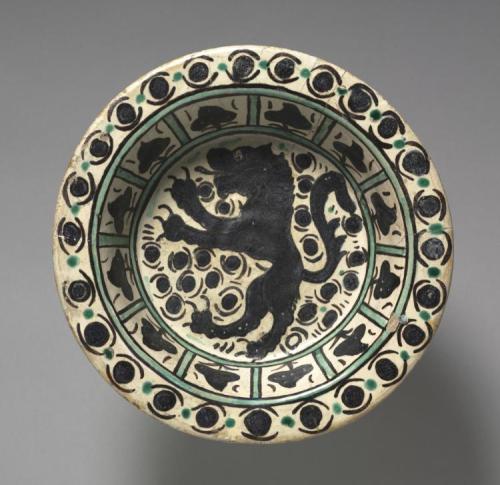
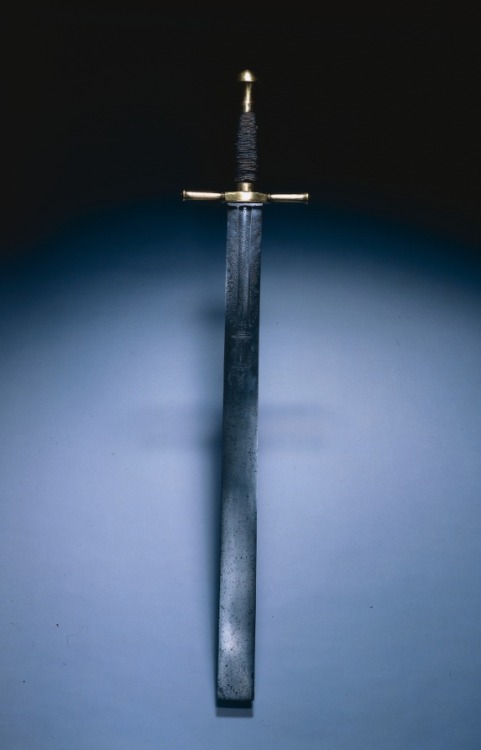
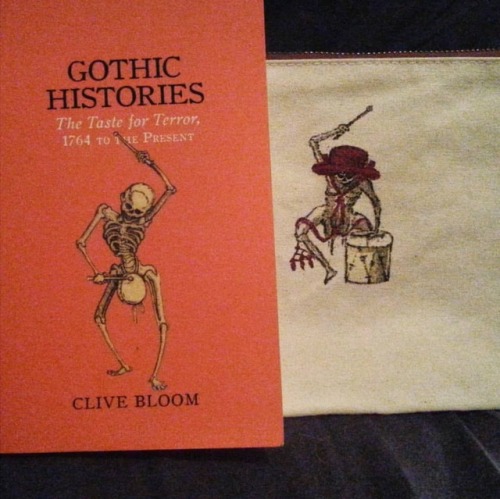
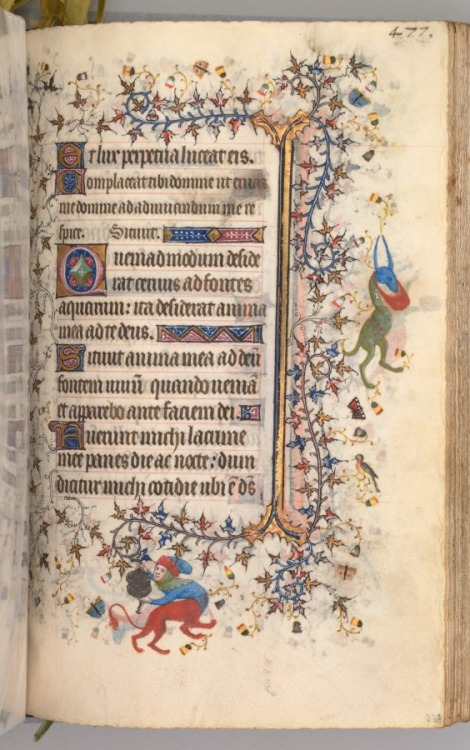
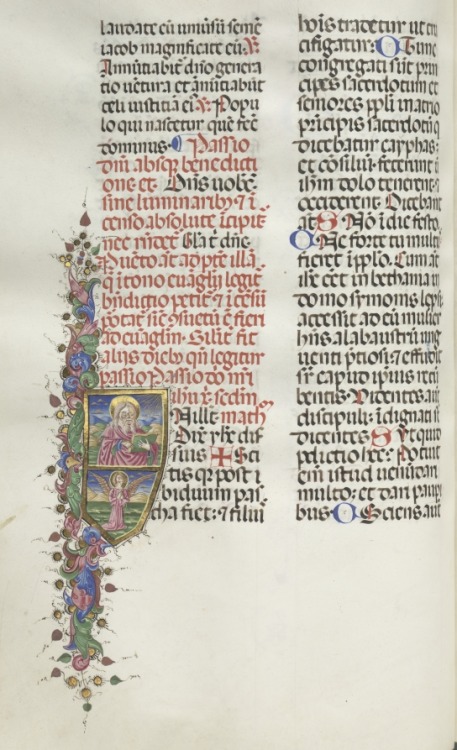

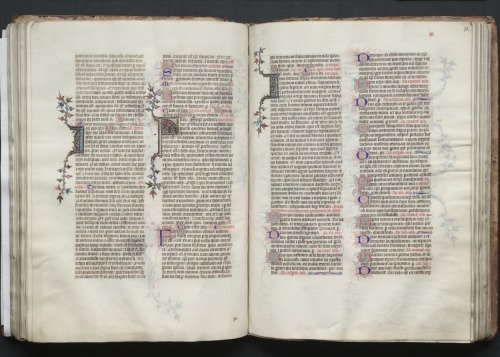






![Two Guineas [pattern] (obverse), John Sigismund Tanner, 1773, Cleveland Museum of Art: Medieval ArtM Two Guineas [pattern] (obverse), John Sigismund Tanner, 1773, Cleveland Museum of Art: Medieval ArtM](https://64.media.tumblr.com/53db4aaa0530c0129c1638afa04bbcf1/047aaeac8ddfc117-8f/s500x750/7c0e09f4ecd4b9805d165ba32427be89ace03eae.jpg)

